The tradescantia nanouk is a beautiful plant with striped green and pink leaves. This plant can grow as a vine in a hanging basket and makes a great houseplant.
This plant is relatively simple to care for. It makes a great houseplant for a beginner plant parent. The basic care tips and tricks in this post will keep your tradescantia nanouk happy and healthy.
This beautiful plant is a member of the spiderwort family and a prolific grower. Much like its popular counterpart the Tradescantia Zebrina.
If you live in the right climate you can grow this plant outdoors. It will do fine outside year round in a warm climate with some humidity. If you live somewhere that gets cold and hard frosts in the winter, you will need to bring it indoors.
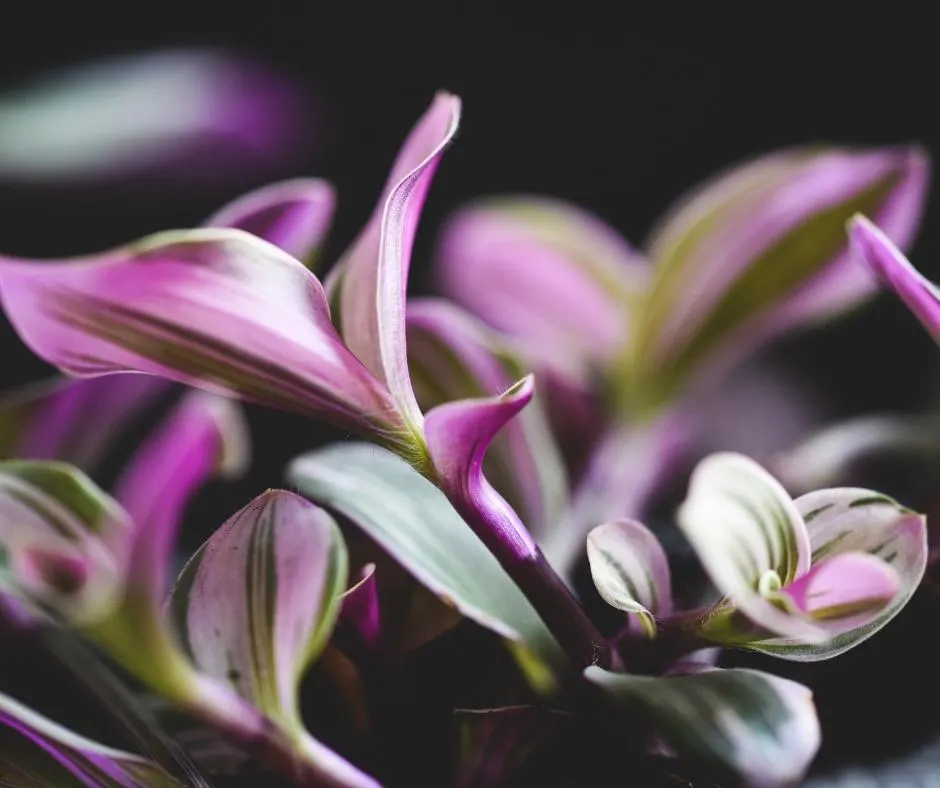
This plant is a fast growing vining plant. You can easily have it in a gorgeous hanging basket display. You can also grow it as a tabletop plant in an upright planter. Just be prepared for lots of pruning if you want it to grow upright without trailing.
You can purchase a tradescantia nanouk at most local nurseries or greenhouses. If you are having trouble locating this plant, online is a great option. We purchase hard to find plants on Etsy from small hobby plant growers.
Buy Tradescantia Nanouk on Etsy
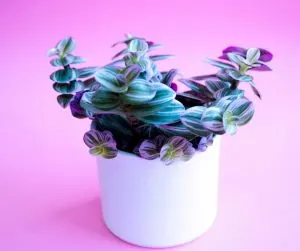
Most people face issues with this plant due to overwatering. Like most houseplants, the nanouk does not like to sit in wet soil for extended periods of time. The safest way to grow this plant is to allow the roots to dry a bit between waterings.
I see lots of beginner plant parents water their houseplants like outdoor plants in the summertime. Giving small amounts of water daily to the plant instead of waiting a week or two and giving it a good soil saturation. If you constantly keep the roots wet, you risk root rot.
On the other end of the spectrum, you need to avoid letting your plant dehydrate too much. Curling leaves often indicate a dry plant. However, you can recover your plant more easily from dehydration than you can from root rot. Always err on the side of caution when picking a watering schedule.
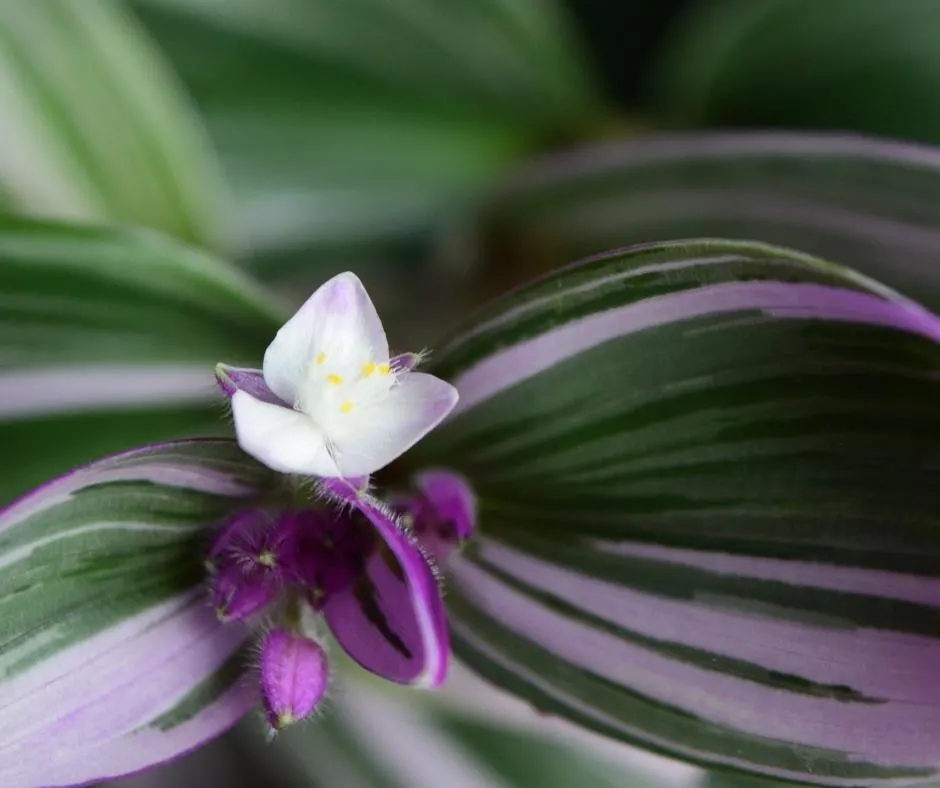
More easy to care for houseplants:
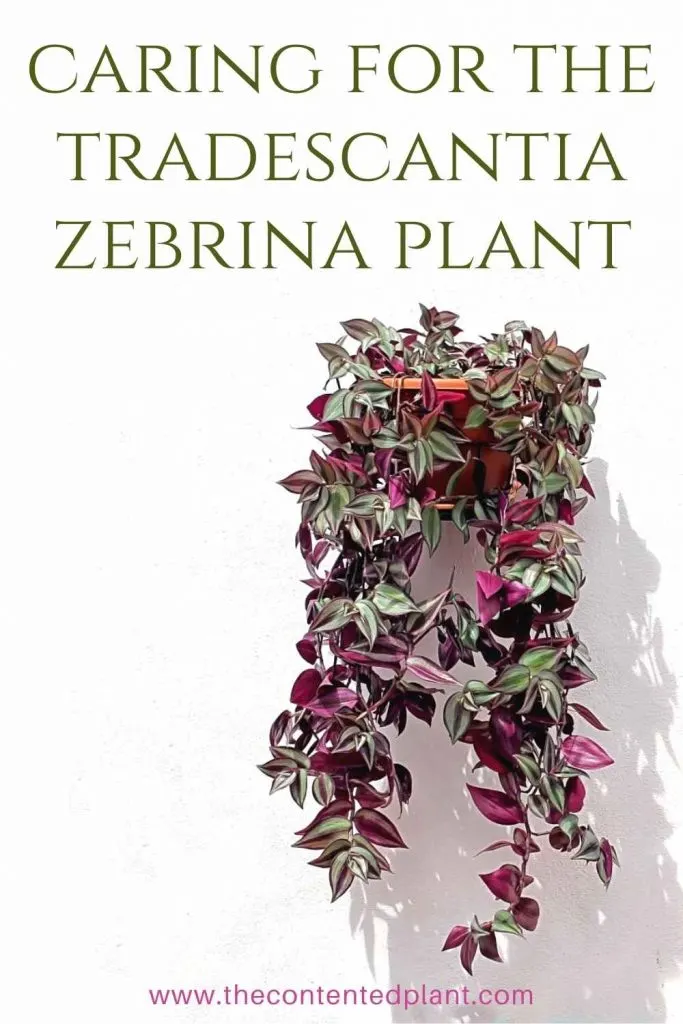
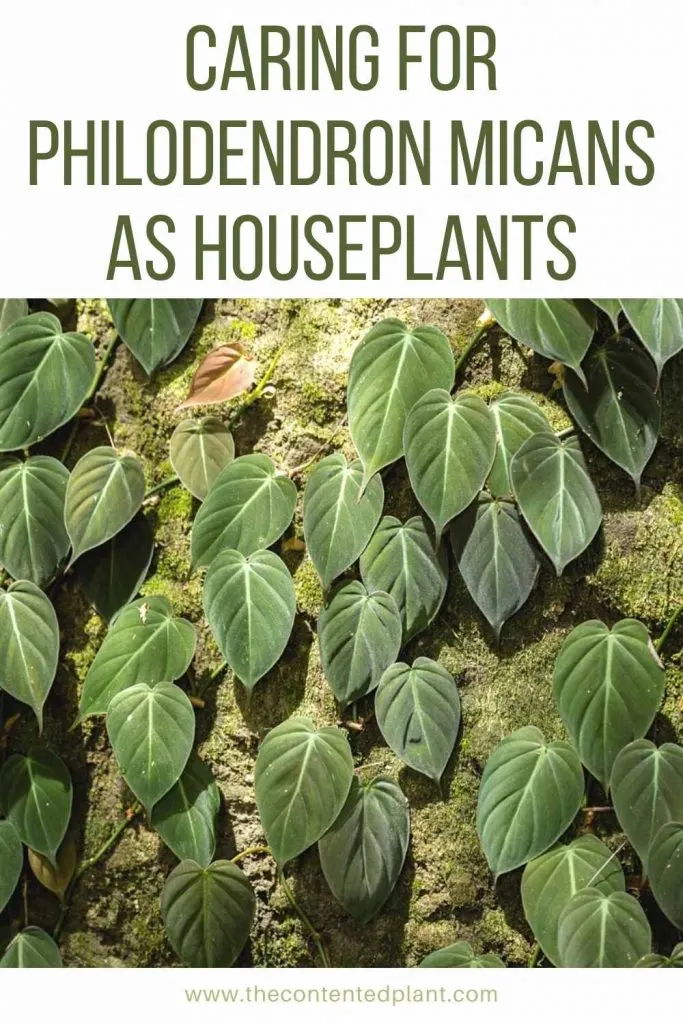
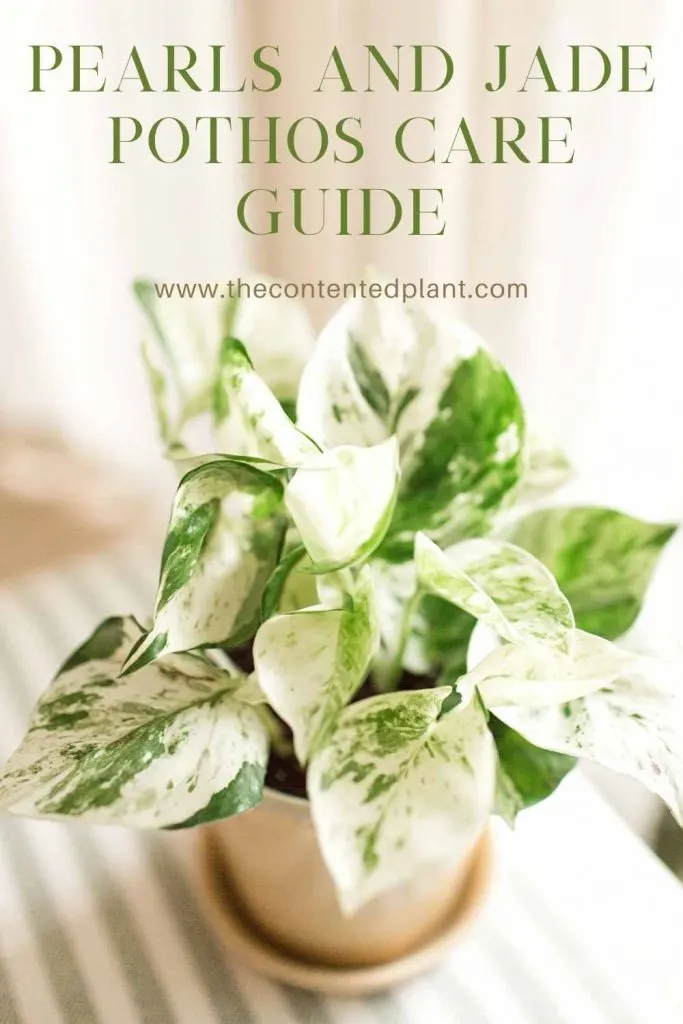
Although this plant is a very easy plant to grow, a few tips and tricks can ensure that you have the most beautiful healthy Nanouk. We have compiled a list of all the top care tips we for this plant. This care guide is printable if you want to save it for later.
Tradescantia Nanouk Care Guide

Tradescantia Nanouk is a beautiful houseplant with pink and green striped leaves.
This lovely vine is a perfect beginner houseplant.
Materials
Instructions
Soil Preference:
- This plant requires a light soil.
- A mix of potting soil and perlite will keep the roots happiest.
- Our mix for this plant is 80% potting soil and 20% perlite
- A heavy soil potting mix is not recommended for Tradescantias.
Pot Size and Type:
- Nanouk vines are quick growing plants, you will need a pot that can accomodate the growth.
- Choose a pot about 2 inches wider in diameter than the current pot.
- Any well drained pot can be used. It MUST have drainage.
- Repot every second year or when roots come out the drainage holes on the pot bottom To the next pot size up.
- Don't jump to a huge pot from a small one unless you wish to encourage faster growth. Just go to the next size up pot.
Lighting:
- The Tradescantia nanouk enjoys bright indirect light.
It will tolerate lower indirect light it if has some brighter moments in the day. - The color will fade on this plant if it is not kept in bright indirect light.
- Some filtered sunlight from a window will be appreciated.
- Shield this plant from strong direct light in summer south and west sunny windows. The leaves will burn.
- Tip: Window sheers or blinds can offset some brief periods of high direct light.
Watering:
- Water your Tradescantia when the soil is dry down an inch or so. This plant does not like to dry out too much. Try a watering schedule of every other week.
- Watering is best done on a regular schedule so the plant is not over or under watered. Both can cause stress on the plant.
- This plant enjoys humidity. In dry climates this tradescantia will thrive with a humidifier nearby. or set it in your kitchen or bathroom. For a really dry climate frequent misting will help.
- In dormant winter months reduce watering to when the soil is dry down halfway .
- Never let this plant get wet feet. If the soil is compacted the bottom of the soil can remain wet which encourages root rot and Fungus Gnats. If you see yellow leaves on your tradescantia you are probably overwatering.
How to Fertilize:
- Apply a good quality fertilizer (linked in materials) monthly through Spring and summer.
- Decrease feedings by late Fall and allow your plant to rest through the winter months.
- Look for brown spots on the leaves of your plants. This may indicate an over concentration of salts in the roots from over feeding. It can burn the leaves.
- The remedy is to set the plant under a faucet of water and let the water run through for 10 minutes or so. Allow the pot to Completely drain. Discontinue fertilizer until the plant recovers.
Temperature:
- Keep plant at a low of 65 Degrees F. to upward of 85 Degrees F. It enjoys warmth and humidity.
Pruning and Training:
- Pruning will give you a fuller plant with more even growth. Unpruned vines will trail and get leggy.
- Sharp Hand pruners are preferred for pruning. They will give a clean cut that will heal quickly.
- Tradescantia will naturally trail. They make good hanging baskets or they will happily trail off shelves. For even growth turn hanging pot every time you water.
Table Top Plants:
- It’s easy to prune and shape these plants to whatever length and fullness you desire.
- As a table top plant cut the trailers back evenly all around the pot. If you want the pot fuller add more starts.
Pests:
- The Nanouk is not fussy and resists pests. However all plants can get attacked by pests.
- Stress by longterm poor watering practices, poor light, extreme temperatures and soil conditions are contributors to stress.
- Spider mites, mealy bugs, scale, thrips and whitefly are the most common houseplant pests you will see.
- Read our post on How to get rid of aphids and other pests with our homemade pesticide soap recipe or neems oil.
- To minimize the possibility of pests be sure to check all nursery plants before bringing them home.
- Quarantine all new plants until you are sure no pests live in them.
How to Propagate:
- Propagation is easily done through leaf node stem cuttings.
- You need a 3 to 6 inch leaf stem with a couple of nodes and healthy growth.
- Place the node into a jar with water. Use tap water that has settled 24 hours in the jar to dissipate chemicals harmful to the plant.
- Set the jar in a well lit area.
- After several weeks roots will grow. Allow the roots to get an inch or more in length.
- Plant gently and firmly into pot with proper soil mix.
- Make sure to keep the soil moist until the roots begin to set into the soil.
Notes
watch our video below for more on Tradescantia care.
We hope you found the answers you were looking for about this plant! Please let us know if you have additional questions in the comment section and we will do our best to answer them! Thank you for stopping by The Contented Plant!
Follow Us:
Find us on YouTube, Instagram , Pinterest and TikTok! We love to Plant chat. We also comment, like and occasionally share your content to our daily stories. We’d love to see your plants. Share your joy in your houseplants. Happy Planting!
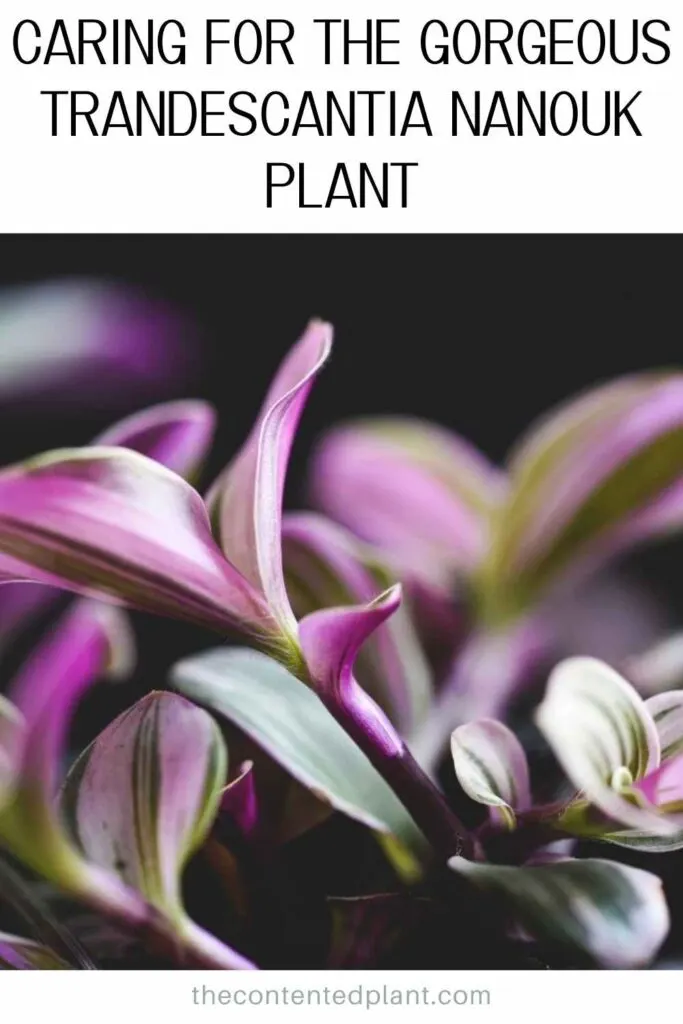

Tradescantia Pink Princess Care Guide - The Contented Plant
Wednesday 22nd of March 2023
[…] Tradescantia Nanouk, on the other hand, has broader, lance-shaped leaves that are a mix of green, pink, and purple. The leaves are not covered in silver hairs like Pink Princess. Nanouk has a more compact, upright growth habit, and it can tolerate slightly lower light levels than Pink Princess. It also prefers consistently moist soil. Read more on the Nanouk in this post. […]